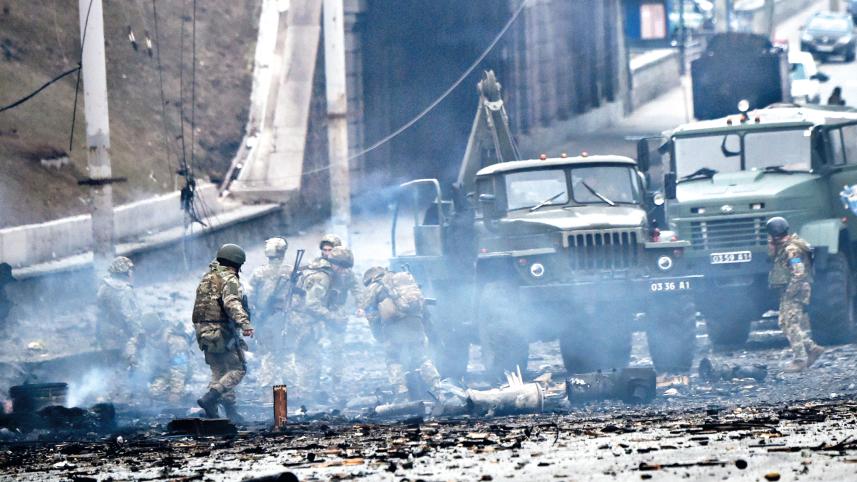UKRAINE AT A GLANCE

1989-1990
In January 1990, more than 400,000 people join hands in a human chain stretching some 400 miles from the western city of Ivano-Frankivsk to Kyiv in an anti-communist protest. The Rada, the new Ukrainian parliament, votes to declare independence from the Soviet Union on July 16, 1990.
1991
The parliament declares independence a second time on August 24. In December, Ukrainians vote (92% to 8%) to make their independence official. The Soviet Union dissolves on December 26.
1992
Ukraine formally establishes relations with Nato but it does not join.
1994-2004
In 10 years as president, Leonid Kuchma helps transition Ukraine from a Soviet republic to a capitalist society.
2004
A presidential election pits Kuchma's hand-picked successor Viktor Yanukovych, supported by Putin, against popular pro-democracy leader Viktor Yushchenko. In the final months of the campaign, Yushchenko falls ill due to poisoning. Yanukovych wins the election amid accusations of rigging. Massive protests follow and the public outcry becomes known as the Orange Revolution. After a third vote, Yushchenko prevails.
2005
Yushchenko takes office as president, with Yulia Tymoshenko as prime minister.
2008
Yushchenko and Tymoshenko formally request that Ukraine be granted a "membership action plan". US President Bush supports Ukraine's membership but France and Germany oppose after Russia voices displeasure.
2010
Yanukovych is elected president. He says Ukraine should be a "neutral state".
2011
Court finds Tymoshenko guilty of "abuse of power" and sentences her to seven years in prison.
NOV 2013-2014
Yanukovych announces that he will not get Ukraine into the EU free trade agreement citing pressure from Russia. Ahead of an impeachment vote, Yanukovych flees to Russia. Ukraine's parliament removes him and installs an interim government. It votes to free Tymoshenko.
With Russian troops in control of the peninsula, the Crimean parliament in March votes to secede from Ukraine and join Russia.
With some 40,000 Russian troops on Ukraine's eastern border in April, violence breaks out in Donbas. Russian-supported separatists declare independence from Ukraine as the Donetsk People's Republic and Luhansk People's Republic.
Pro-West politician Petro Poroshenko is elected Ukraine's president in May.
Representatives from Russia, Ukraine, France, and Germany meet to sign the first Minsk agreement, a deal between Ukraine and Russia to stop the violence under a fragile ceasefire.
2015
The Minsk group meets again resulting in the Minsk II agreement.
2016-2017
As fighting in Donbas continues, Russia repeatedly strikes Ukraine in a series of cyberattacks, including a 2016 attack on Kyiv's power grid that causes a major blackout.
2019
In April, comedian Volodymyr Zelenskyy is elected president in a landslide. His early efforts to reach a solution to the violence are slowed by US President Trump, who briefly blocks US military aid to Ukraine and urges Zelenskyy to work with Putin.
2021
Russia sends about 100,000 troops to Ukraine's borders in April, ostensibly for military exercises. Zelenskyy urges Nato to put Ukraine on a timeline for membership. Satellite imagery shows in November a new build-up of Russian troops.
2022
On February 1, Putin denies planning an invasion and accuses the US of ignoring his country's security demands. Putin on February 21 recognises Donetsk and Luhansk as independent entities and then orders Russian troops to "maintain peace" there.
FEB 24, 2022
Russian forces invade Ukraine.
SOURCE: Agencies



 For all latest news, follow The Daily Star's Google News channel.
For all latest news, follow The Daily Star's Google News channel.
Comments